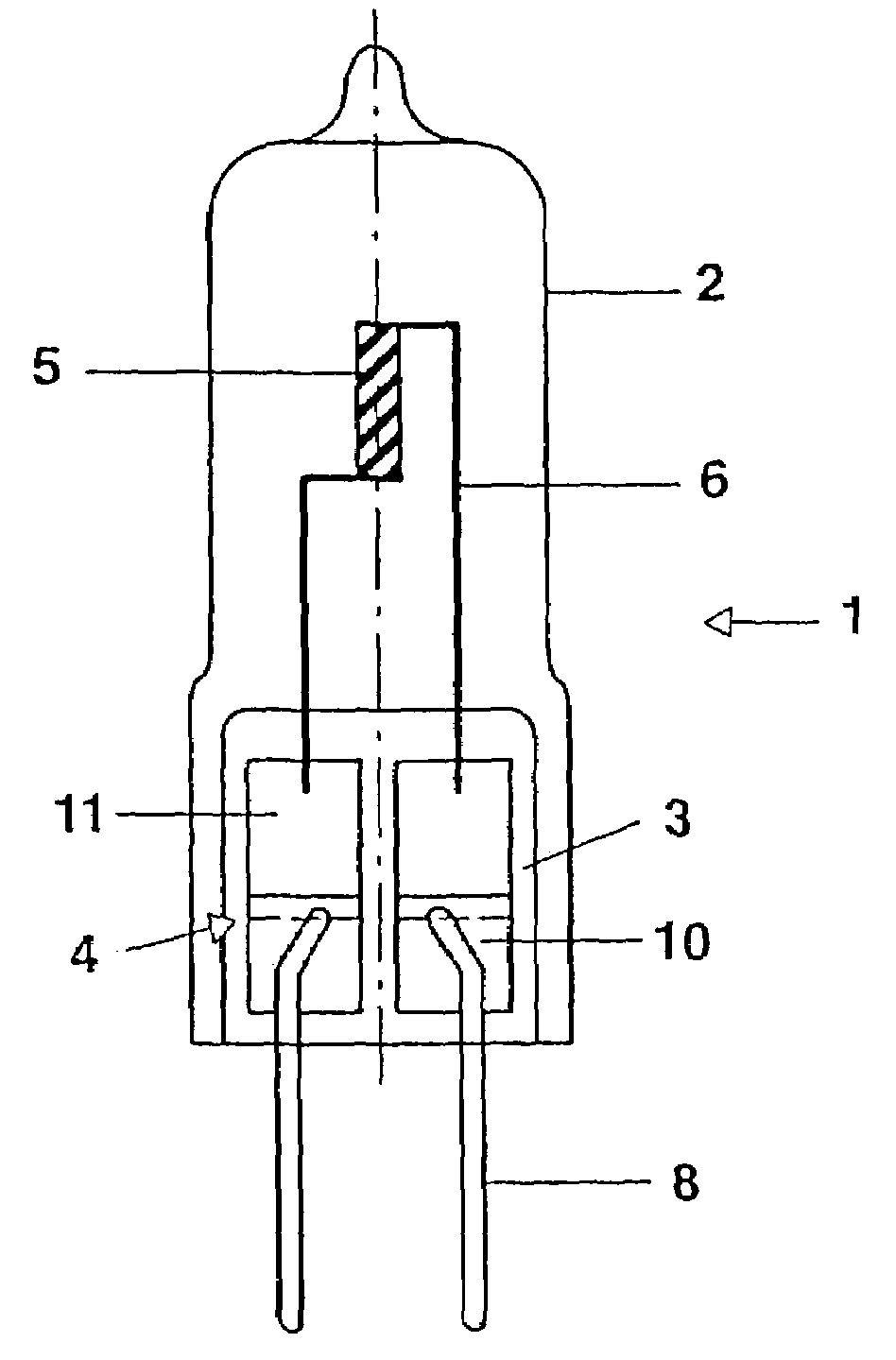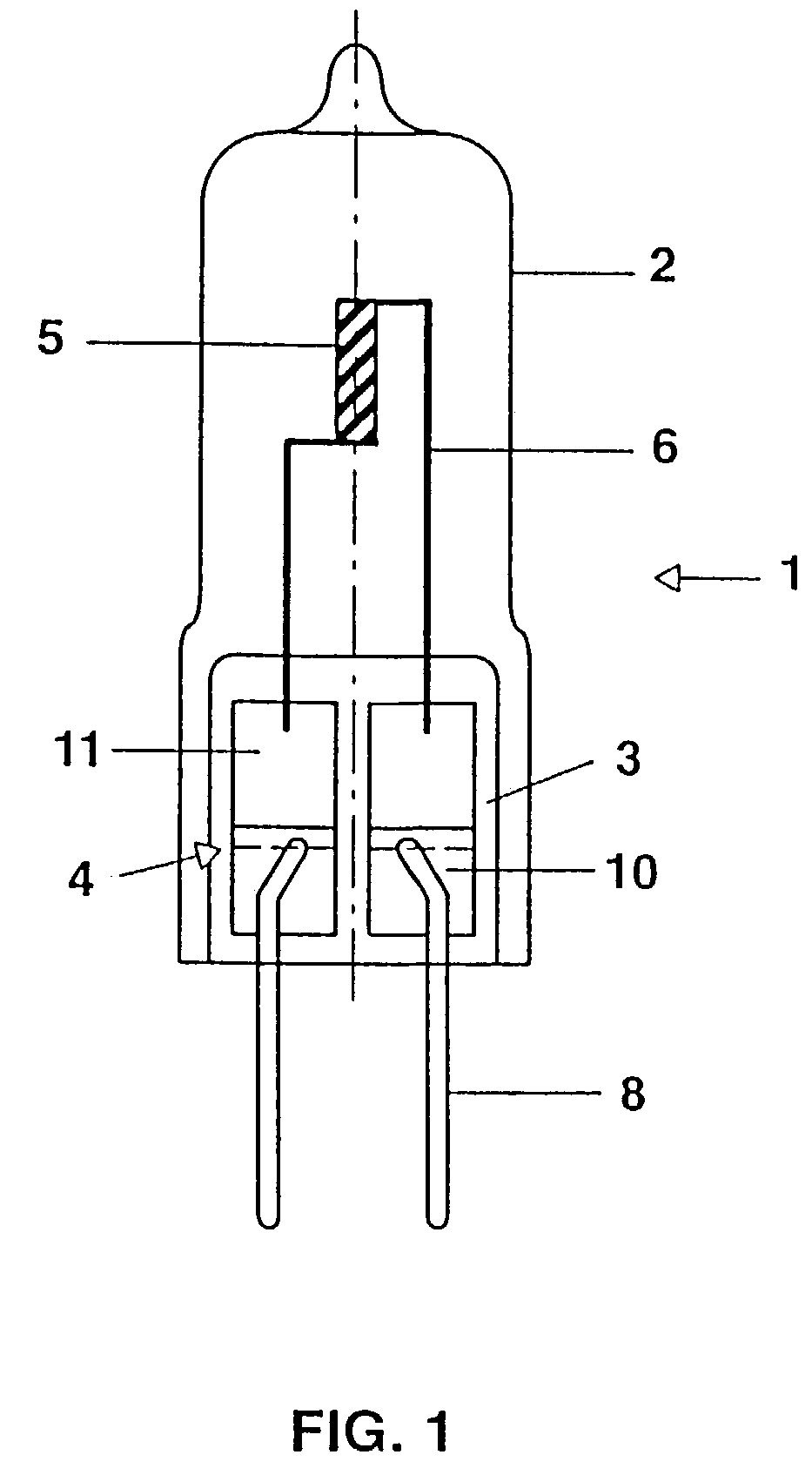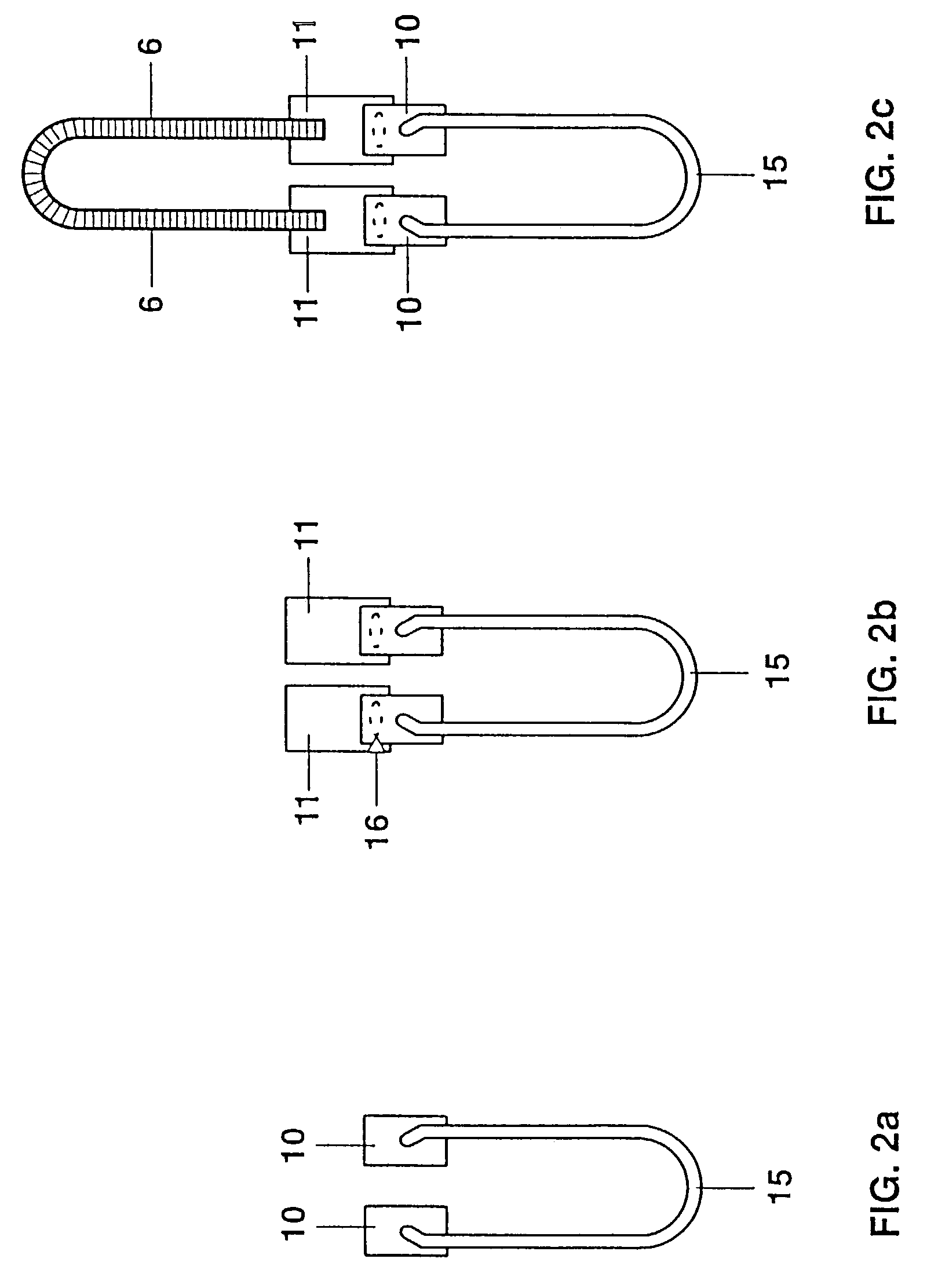Sealing foil and associated lamp having this foil
a technology of sealing foil and associated lamps, which is applied in the manufacture/treatment of superconductor devices, liquid/solution decomposition chemical coatings, coatings, etc., can solve the problems of high scrap levels during resistance welding and increase the wear of resistance welding electrodes, and achieve high scrap rate and reliable and simple way.
- Summary
- Abstract
- Description
- Claims
- Application Information
AI Technical Summary
Benefits of technology
Problems solved by technology
Method used
Image
Examples
Embodiment Construction
[0022]The exemplary embodiment shown in FIG. 1 is a halogen incandescent lamp 1 (12V for 100 W output) with a lamp bulb 2 made from quartz glass, which is closed off in a gas-tight manner with the aid of a pinch seal 3. Two molybdenum foil stacks 4 are embedded in the pinch seal of the lamp bulb. Inside the lamp bulb there is a double-coiled luminous body 5, of which the single-coiled ends act as inner supply conductors 6. The inner supply conductors are each welded to a molybdenum foil stack 4 embedded in the pinch seal. Two outer supply conductors 8, which are each connected to one of the two molybdenum foil stacks, project out of the pinch seal 3.
[0023]The two molybdenum foil stacks 4 embedded in the pinch seal each comprises two foils 10, 11. The inner sealing foil 11 is coated with a 60 nm thick eutectic Mo—Ru alloy on one side, specifically the side to which the inner supply conductor 6 is secured. The outer welding foil 10 is coated on both sides with pure Ru with a layer thi...
PUM
| Property | Measurement | Unit |
|---|---|---|
| thickness | aaaaa | aaaaa |
| thickness | aaaaa | aaaaa |
| thickness | aaaaa | aaaaa |
Abstract
Description
Claims
Application Information
 Login to View More
Login to View More - R&D
- Intellectual Property
- Life Sciences
- Materials
- Tech Scout
- Unparalleled Data Quality
- Higher Quality Content
- 60% Fewer Hallucinations
Browse by: Latest US Patents, China's latest patents, Technical Efficacy Thesaurus, Application Domain, Technology Topic, Popular Technical Reports.
© 2025 PatSnap. All rights reserved.Legal|Privacy policy|Modern Slavery Act Transparency Statement|Sitemap|About US| Contact US: help@patsnap.com



